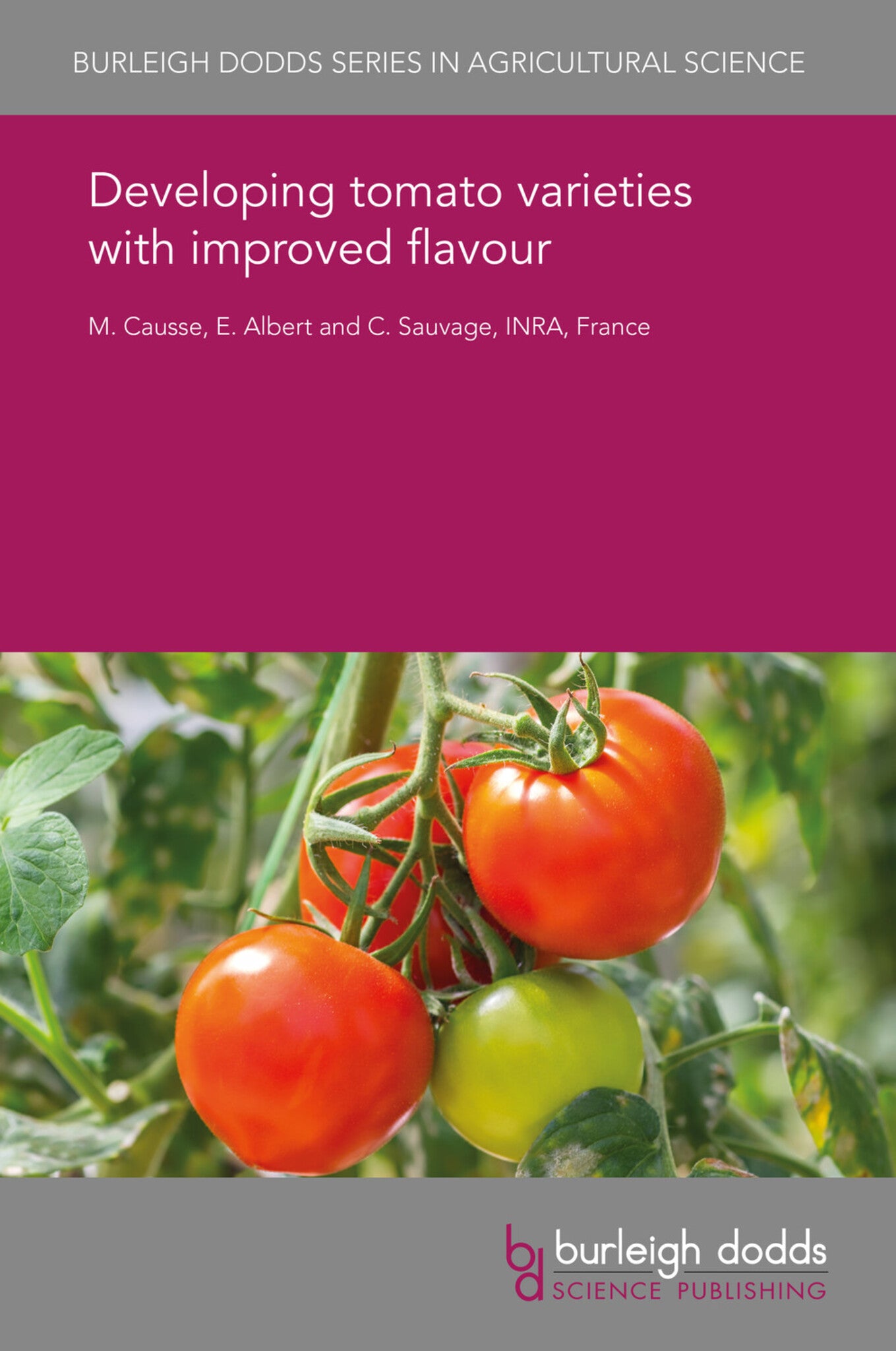We're sorry. An error has occurred
Please cancel or retry.
Developing tomato varieties with improved flavour
Regular price
£25.00
Sale price
£25.00
Regular price
£25.00
Unit price
/
per
Sale
Sold out
Re-stocking soon
Tomato fruit quality is a complex trait involving a number of components, including appearance, flavour, aroma and texture. There is a large range of genetic diversity in tomato for fruit quality c...
Read More

Some error occured while loading the Quick View. Please close the Quick View and try reloading the page.
Couldn't load pickup availability
- Format:
-
31 March 2017

Tomato fruit quality is a complex trait involving a number of components, including appearance, flavour, aroma and texture. There is a large range of genetic diversity in tomato for fruit quality components. Although a few major mutations may have a huge effect on fruit quality (notably the rin mutation), most of the components have a quantitative inheritance. Several Quantitative Trait Loci (QTL) mapping experiments have been performed, mostly on interspecific progeny. Many loci and QTL have thus been detected, revealing some QTL cluster regions. Tomato is a model plant for fruit development and composition, and knowledge about its physiology is rapidly increasing. This chapter examines the use of QTL to identify and determine favourable sensory characteristics, exploring current technologies and suggesting future trends for research in this area.

Price: £25.00
Publisher: Burleigh Dodds Science Publishing
Imprint: Burleigh Dodds Science Publishing
Series: Burleigh Dodds Series in Agricultural Science
Publication Date:
31 March 2017
ISBN: 9781838792848
Format: eBook
BISACs:
TECHNOLOGY & ENGINEERING / Agriculture / Sustainable Agriculture, Commercial horticulture, SCIENCE / Life Sciences / Horticulture, TECHNOLOGY & ENGINEERING / Agriculture / Agronomy / Crop Science, Botany and plant sciences, Sustainable agriculture, Agronomy and crop production

- 1 Introduction
- 2 Genetic diversity of tomato flavour and consumer expectations
- 3 Genes and quantitative trait loci affecting flavour
- 4 Tomato texture
- 5 New approaches to tomato flavour diversity and genetic control
- 6 From MAS to genomic selection for flavour breeding
- 7 Interactions genotype by environment: a tool for breeding good tomatoes
- 8 Future trends
- 9 Conclusion
- 10 Where to look for further information
- 11 References



